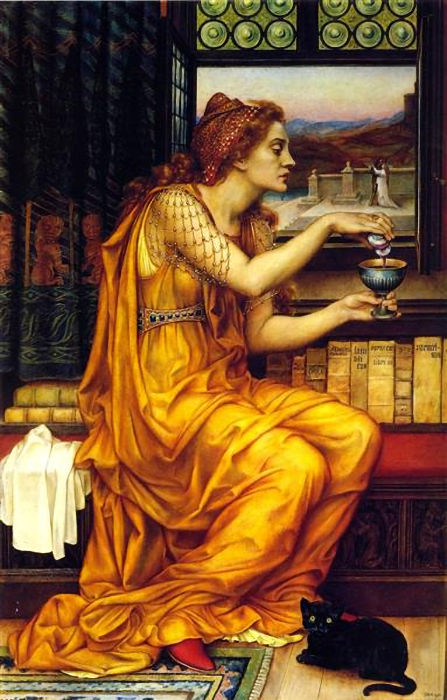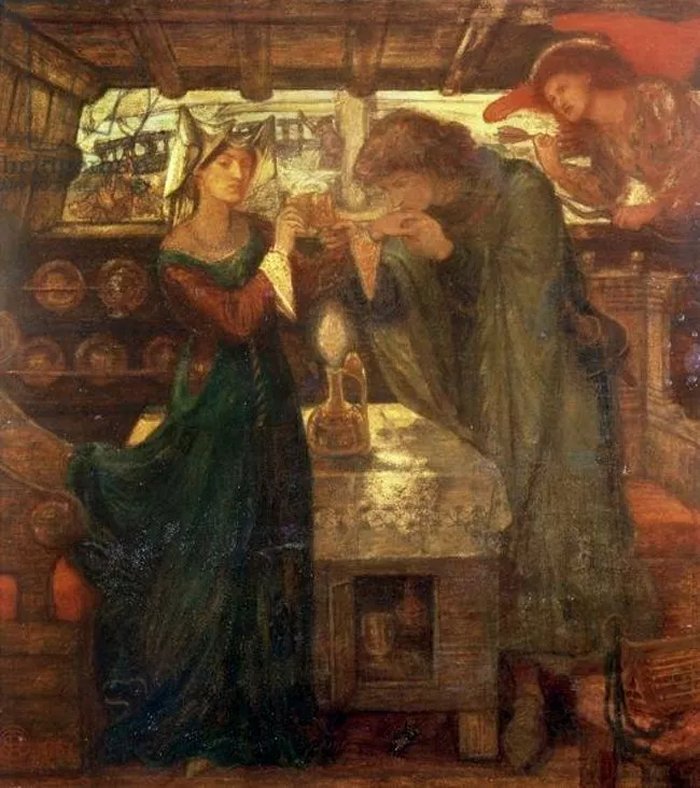Giulia Tofana Poisoned 600 Men – Beautiful Sicilian Woman And Her Deadly Mission
Ellen Lloyd - AncientPages.com - Most of us would say it's difficult to understand how someone who deliberately killed hundreds of people could be hailed a hero. However, those who defend Giulia Tofana justified her motives and actions.
Giulia Tofana (1620-1659) poisoned 600 men, but she only targeted one specific group of men she believed had to die.
Selling poison was a good business. Credit: The Love Potion by Evelyn De Morgan (1903) - Public Domain
Considering she is one of the deadliest female serial killers in history, it is surprising how little there is information about Giulia Tofana. There are no portraits of her, and much about her past is unclear. Her famous poison Aqua Tofana, named after her, was impossible to trace during an autopsy.
Based on what is known, Giulia Tofana was born in Palermo around 1620. She had a daughter, but whether she was married or not has been determined. The use of toxins and poisons in the Middle Ages and Renaissance was widespread, and some made their living as "professional poisoners."
Giulia Tofana's marketing idea was to sell poison to unhappy wives. In those days, when marriage was pre-arranged, and there was no possibility of divorce, plenty of women wanted to get rid of their husbands. The most common poisons were cantarella, strychnine, hemlock, belladonna, foxglove, aqua tofana, and arsenic.
Many complaining women came to Giulia telling horrible stories about poverty, home abuse, and cruel treatments. Giulia felt sorry for the women and wanted to help them get an early divorce by becoming widows.
She started selling cosmetics in southern Italy, and one of her most popular products was the poison Aqua Tofana disguised as powdered makeup.
Aqua Tofana was a mixture of arsenic, lead, and belladonna, all deadly poisonous substances. Whether she or her mother Thofania d'Adamo came up with the recipe is unknown, but four drops of the substance were enough to kill any man.
Although she planned to sell the poison to low-status women, the fact remains that any woman could buy Aqua Tofana, and the business was highly lucrative.
Tofana's poison was tasteless, odorless, colorless, and sold hidden in small vials with the image of Saint Nicholas of Bari. The small bottle could be placed on women's dressing tables next to other lotions and perfumes without raising suspicion.
In the 1650s, one of Tofana's clients realized she was about to do something horrible. She had bought a bottle of Aqua Tofana and was prepared to poison her husband, but she stopped her husband from eating the soup at the last minute. The suspicious man forced his wife to tell the truth, and Papal authorities learned about Tofana's poison.
The use of poison was widespread in Europe during the Middle Ages and Renaissance. Credit: Wikipedia
Beautiful Tofana was very popular, and the public protected her from apprehension. She sought and was granted sanctuary in a church, but when rumors spread that she had poisoned the water around Rome, the police forced their way into the church and dragged Tofana in for questioning.
During the torture, Tofana confessed that she had killed 600 men with her poisons in Rome between 1633 and 1651.
In July 1659, Tofana was executed along with her daughter, Girolama Spera (who was also selling poison), and three of her aides. After her death, her body was thrown over the church wall that had provided her with sanctuary.
Aqua Tofana became so famous that in 1791, Wolfgang Amadeus Mozart claimed Giulia Tofana's invention was poisoning him. He claimed, "Someone has given me acqua tofana and calculated the precise time of my death." from his deathbed, Mozart declared, "I feel definitely that I will not last much longer; I am sure that I have been poisoned."
There is no evidence that Mozart died by being poisoned with Aqua Tofana, but Giulia Tofana's deadly recipe was still being discussed over a hundred years after her death.
Updated on June 12, 2022
Written by Ellen Lloyd – AncientPages.com
Copyright © AncientPages.com All rights reserved. This material may not be published, broadcast, rewritten or redistributed in whole or part without the express written permission of AncientPages.com
Expand for referencesMore From Ancient Pages
-
 Bog Body Of The Elling Woman: Was She Sacrificed To The Gods Because Of Climate Change?
Civilizations | Mar 25, 2017
Bog Body Of The Elling Woman: Was She Sacrificed To The Gods Because Of Climate Change?
Civilizations | Mar 25, 2017 -
 Archaeologists Will Excavate Unique Ancient Roman Obelisk Near Lesicheri, Bulgaria
Archaeology | Apr 8, 2016
Archaeologists Will Excavate Unique Ancient Roman Obelisk Near Lesicheri, Bulgaria
Archaeology | Apr 8, 2016 -
 Bad Dürrenberg Shaman’s 9,000-Year-Old Spectacular Headdress And Another Surprising Discovery
Archaeology | Dec 12, 2025
Bad Dürrenberg Shaman’s 9,000-Year-Old Spectacular Headdress And Another Surprising Discovery
Archaeology | Dec 12, 2025 -
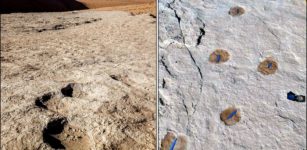 120,000-Year-Old Human Footprints Discovered In Saudi Arabia
Archaeology | Sep 18, 2020
120,000-Year-Old Human Footprints Discovered In Saudi Arabia
Archaeology | Sep 18, 2020 -
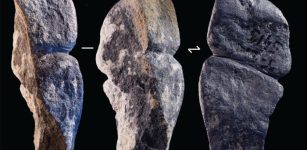 Oldest Carving Of A Penis Discovered On Ancient Mongolian Pendant
Archaeology | Jun 20, 2023
Oldest Carving Of A Penis Discovered On Ancient Mongolian Pendant
Archaeology | Jun 20, 2023 -
 Amazing World’s Largest Mosaic Piece Made By 13 Different Ancient Civilizations At Museum Hotel Antakya
Featured Stories | May 9, 2019
Amazing World’s Largest Mosaic Piece Made By 13 Different Ancient Civilizations At Museum Hotel Antakya
Featured Stories | May 9, 2019 -
 Bacteria Found In 4,000-Year-Old Human Molars Found In Cave – Responsible For Tooth Decay And Gum Disease – New Study
Archaeology | Mar 30, 2024
Bacteria Found In 4,000-Year-Old Human Molars Found In Cave – Responsible For Tooth Decay And Gum Disease – New Study
Archaeology | Mar 30, 2024 -
 Ancient DNA And Tombstones Lead Scientists To Black Death’s Source Strain
Archaeology | Jun 15, 2022
Ancient DNA And Tombstones Lead Scientists To Black Death’s Source Strain
Archaeology | Jun 15, 2022 -
 Why Was The Face Of Mysterious Ust-Taseyevsky Stone Idol Suddenly Changed?
Archaeology | Jan 18, 2021
Why Was The Face Of Mysterious Ust-Taseyevsky Stone Idol Suddenly Changed?
Archaeology | Jan 18, 2021 -
 Ancient Secrets Of The Petroglyphs At The Winnemucca Lake: North America’s Oldest Known
Featured Stories | Jul 20, 2025
Ancient Secrets Of The Petroglyphs At The Winnemucca Lake: North America’s Oldest Known
Featured Stories | Jul 20, 2025 -
 Mystery Of The Ancient Bear Bones In The Aleutian Islands, Alaska
Archaeology | Oct 5, 2023
Mystery Of The Ancient Bear Bones In The Aleutian Islands, Alaska
Archaeology | Oct 5, 2023 -
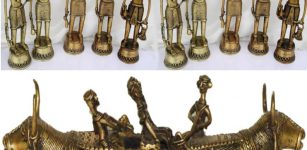 Telangana And Great Ancient Iron Masterwork Of Skilled Blacksmiths Of India
Ancient Technology | May 26, 2017
Telangana And Great Ancient Iron Masterwork Of Skilled Blacksmiths Of India
Ancient Technology | May 26, 2017 -
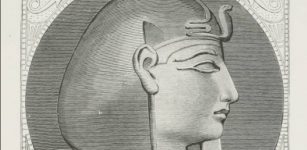 Pharaoh Merneptah – His Giant Sarcophagus And Unique Victory Stele
Featured Stories | Apr 17, 2018
Pharaoh Merneptah – His Giant Sarcophagus And Unique Victory Stele
Featured Stories | Apr 17, 2018 -
 On This Day In History: National Hero Paul Revere Warns Of The British Coming – On Apr 18, 1775
News | Apr 18, 2017
On This Day In History: National Hero Paul Revere Warns Of The British Coming – On Apr 18, 1775
News | Apr 18, 2017 -
 Why Did Socrates Drink Poison And Commit Suicide?
Ancient History Facts | Apr 21, 2018
Why Did Socrates Drink Poison And Commit Suicide?
Ancient History Facts | Apr 21, 2018 -
 Obatala ‘King Of The White Cloth’ And Creation Story Of Yoruba People
African Mythology | Jan 9, 2021
Obatala ‘King Of The White Cloth’ And Creation Story Of Yoruba People
African Mythology | Jan 9, 2021 -
 Oldest Aqueduct Dated To 3rd Century BC Discovered In Rome
Archaeology | Apr 4, 2017
Oldest Aqueduct Dated To 3rd Century BC Discovered In Rome
Archaeology | Apr 4, 2017 -
 Strange Ancient Human Bones And Artifacts Of An Unknown Lost Civilization Found In Nebraska
Featured Stories | Jun 20, 2024
Strange Ancient Human Bones And Artifacts Of An Unknown Lost Civilization Found In Nebraska
Featured Stories | Jun 20, 2024 -
 Galileo Galilei Wrote A Controversial Astronomical Treatise Using A Pseudonym
News | Oct 6, 2022
Galileo Galilei Wrote A Controversial Astronomical Treatise Using A Pseudonym
News | Oct 6, 2022 -
 Frightening Hockomock Swamp: Unexplained Vanishings, Encounters With Unknown Creatures, And Ancient Mysteries
Featured Stories | Dec 5, 2024
Frightening Hockomock Swamp: Unexplained Vanishings, Encounters With Unknown Creatures, And Ancient Mysteries
Featured Stories | Dec 5, 2024

